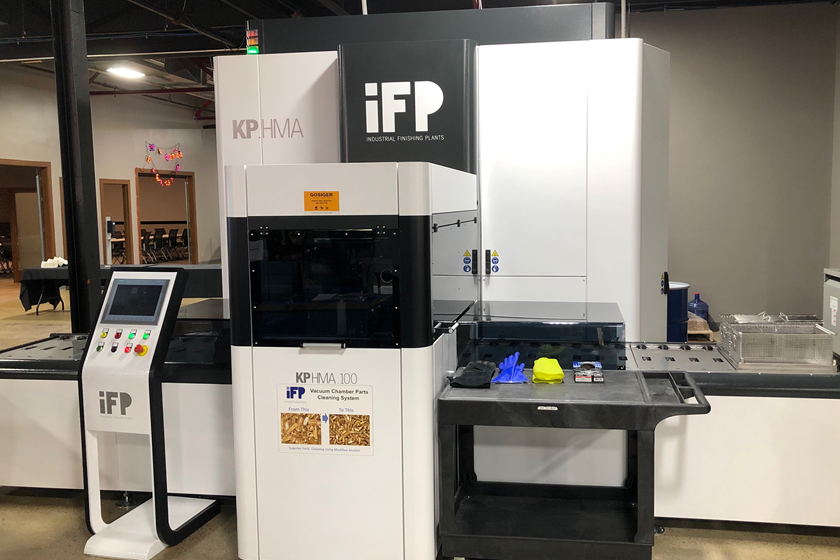Modified Metals for Space Engineering Produced in Submilliseconds
Scientists from Russia's Tomsk Polytechnic University and the Institute of High Current Electronics, SB RAS, have developed a method to apply wear-resistant coatings on metals, followed by fusing them in the substrate.
#electronics

Maria Rygina and Professor Yuri Ivanov.
Featured Content
Scientists from Russia's Tomsk Polytechnic University (TPU) and the Institute of High Current Electronics, Siberian Branch Russian Academy of Sciences, have developed a method to apply wear-resistant coatings on metals, followed by fusing them into the substrate.
Such modified materials, through a combination of lightness, strength and corrosion resistance, can be used in mechanical engineering, aviation and space engineering. New materials are based on aluminum and silumin—an alloy of aluminum and silicon.
“These metals have low weight, good corrosion resistance. For use in air and space engineering, we only need to modify their strength and tribological properties: to improve hardness and wear resistance,” Maria Rygina says, a graduate student of the TPU Department of Nanomaterials and Nanotechnologies.
As coatings, polytechnicers use titanium, titanium nitride and silumin containing 25-percent silicon. The peculiarity of the developed method is that the coating is not deposited onto a substrate but fused into it by means of an intense pulsed electron beam. Experimental studies have shown that it resulted in almost six-fold improvement in the hardness of metal and three times the wear resistance.
World experts on materials science remark that the main challenge is now adhesion of the coating and the substrate. If the coating is simply deposited, then it can be easily removed. Foreign research teams are looking for a solution to this issue by forming multi-layer coatings. However, multi-layer deposition takes a long time.
"We offer fusing the coating in the substrate: this takes microseconds, and the adhesion is significantly improved,” says the project’s scientific head, Professor Yuri Ivanov, the TPU Department of Nanomaterials and Nanotechnologies.
To form coatings by such a method is possible due to specific electron-ion-plasma installations created by the scientists from IHCE SB RAS and TPU. As the developers say, the installations are unique and are supplied to Japan, China, Canada.
According to Maria Rygina, the modified metals can be used for manufacturing internal mechanisms’ parts in spacecrafts: It is those that are the most wearable. Currently this method is used in the production of woodworking tools and components for mechanical engineering.
For more information, visit tpu.ru/en.
RELATED CONTENT
-
Plating Q&A: Can you color stainless steel?
Our expert, Art Kushner, says yes, you can color stainless steel, but it is not a process that is typically performed in a plating shop. Read more about his answer.
-
Understanding Corrosion and Salt Spray
How it’s produced, NSS testing and how to get the best results possible.
-
Overview: Aerospace Anodize Finishes
The following anodizing process overviews are provided as a means of introduction to aerospace anodizing


















